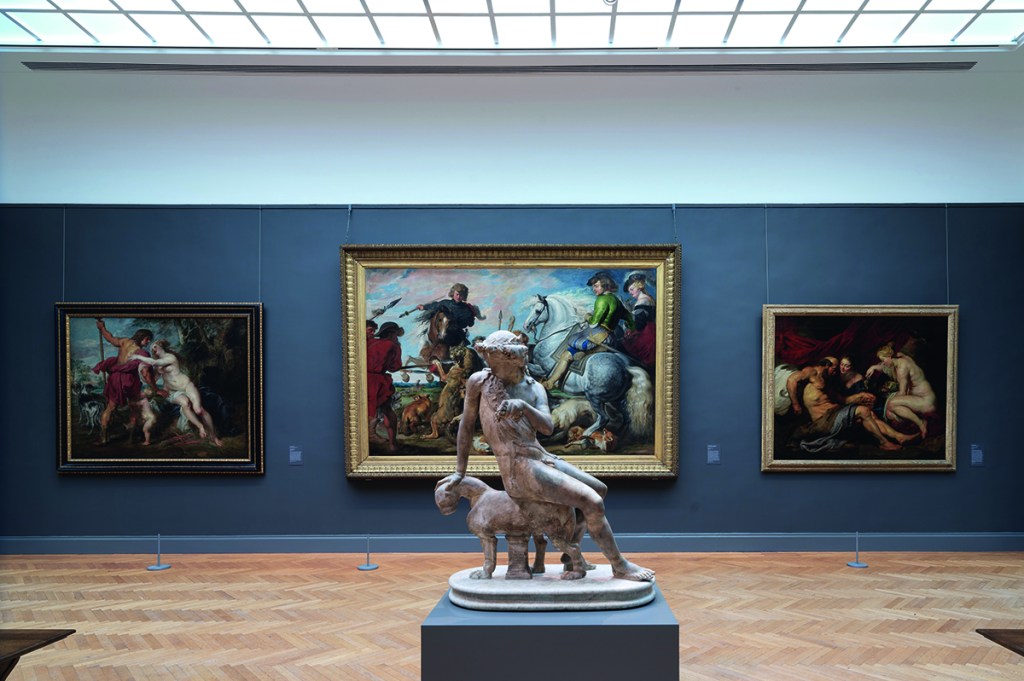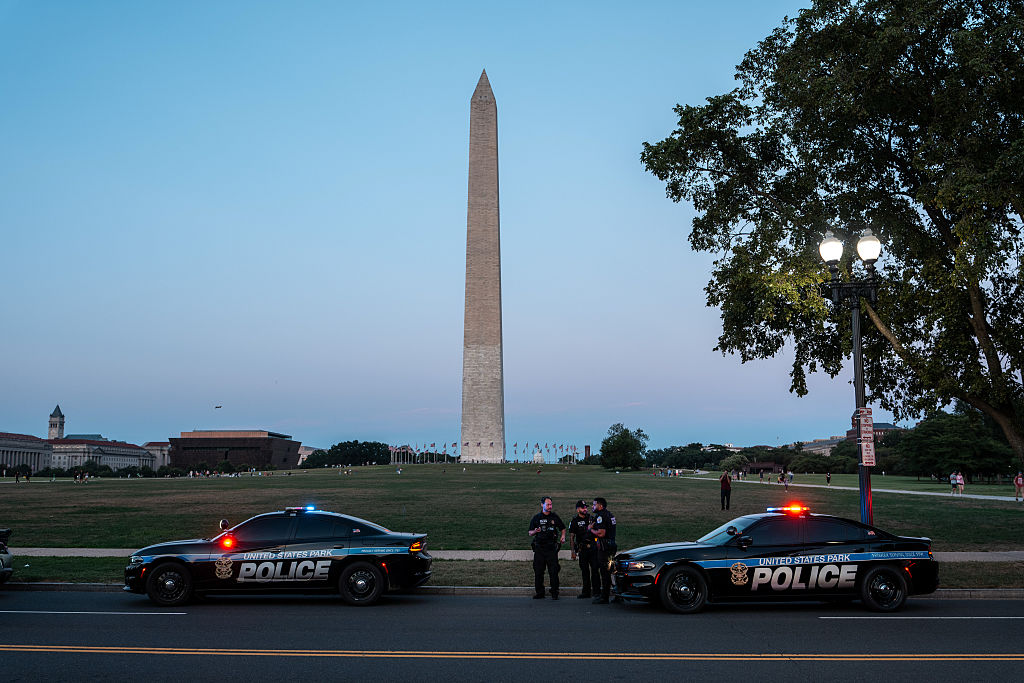The Old Masters at the Metropolitan Museum of Art needed a new hat. The galleries are given pride of place in the expansive Fifth Avenue building, standing at the head of its enormous Beaux-Arts grand staircase. They contain many of the Met’s most popular treasures, but they weren’t showing pre-19th-century European paintings in the best of all possible lights. In 2018, Keith Christiansen, the chairman of the Department of European Paintings, embarked on the enormous project of renovating and modernizing the skylight system for the galleries. The museum is now about halfway through the four-year, $150 million endeavor.
That’s a hefty price tag, but it’s a project that was long overdue. Though casual visitors wouldn’t have noticed anything overtly amiss about the galleries, the museum’s intricate behind-the-scenes (or, rather, above-the-scenes) lighting system was in a state of deep disrepair. The 30,000 square feet of skylights — windows cut into the roof of the building to allow natural sunlight into the rooms — were originally installed in 1939, and have become outdated, damaged and dirty. Just below them, but still out of view from the floor, were a venerable apparatus of ‘louvers’, long, white slats that mechanically adjust to disperse that sun according to the hour and climate. These were only semi-functional, allowing too little light into some galleries and too much into others.
Finally, and immediately apparent to those who bothered to look up, many of the ‘laylights’, the glazed glass ceilings designed to diffuse light evenly into the galleries, were visibly dirty, soiled or dimmed out. That forced the museum to compensate with direct spots, causing reflective glare on some of the darker and glossier canvases. These various defects not only flawed the viewing conditions for individual works, they also made for a disrupted and inconsistent overall experience.
The new and improved system, which visitors saw in action for the first time in December when a portion of the galleries was finally reopened, corrects the issues. I’ve visited the Old Master galleries on both sunny and overcast days, and stayed until closing time, past nightfall. To my eyes and memory, the light in the newly renovated galleries is indeed softer — more even and diffuse — and more natural-seeming than before.
Really, the revamped galleries succeed in what you don’t notice. Those annoying shadows that ornate frames can often cast onto the top edge of paintings seem to have been reduced — and even sometimes eliminated — by the more ambient light. It’s a light that gets out of the way, that doesn’t impose itself on the paintings or influence your understanding of the works. The spaces, peaceful and pleasant (and quieter than ever, thanks to limited-capacity policies currently in place), are an ideal atmosphere for meandering reflection and painterly inspection.
The Met’s title for the new presentation, ‘A New Look at Old Masters’, doesn’t refer only to the updated skylights. As the museum is committed to a phased plan that keeps a portion of the galleries open to visitors throughout the four-year construction project, work continues apace on the southern rooms, which they expect to complete by Spring 2022. In the meantime, out of the 44 total galleries, just 21 are now open to the public; in these, the curatorial team led by Christiansen has hung about 500 paintings, compared to the usual 700 that normally occupied the entire department.
That’s a lot of art for not a lot of space. Responding to the challenge of fitting it all in, the curators have gamely taken the opportunity to tinker with a collection that normally honors strict chronological and geographical divisions in the service of communicating a coherent art historical narrative. Abandoning traditional distinctions such as that between ‘northern’ Dutch and Flemish painting and ‘southern’ Italian art, the present arrangement regularly pushes the two regions up against one another, organizing rooms according to various pan-European themes and promoting ‘crossnational dialogues’. For instance, Gallery 602, dedicated to ‘Painting as the Mirror of Nature: 1420-1480’ puts Vittore Carpaccio’s ‘Meditation on the Passion’ (Italian, c.1490), into conversation with ‘Portrait of an Old Man’ (Netherlandish, c. 1475) by Hans Memling. Other gallery themes include ‘Baroque Europe, between Naturalism and Theatricality’, and ‘The Most Perfect Style’.
The aggregate experience is occasionally jarring. Poussin, for instance, is divided between two galleries; Rubens is stretched through four. The curators are, of course, correct that cross-fertilization among different cities and regions was hugely influential in the development of European painting. But the resulting stylistic leaps and bounds that take place on the walls sometimes obscure our ability to appreciate masterworks that were, in reality, the product of small, tentative, hard-fought baby steps, and whose innovations and achievements are all the more inspiring for being so.
At the same time, felicitous exchanges arise between artworks that might not have conversed in a more traditional setup. In the gallery titled ‘Giotto’s Legacy: 1230-1450’, we now have the chance to compare directly this fountainhead of Florentine painting to masterworks by Duccio, Sassetta, Pietro Lorenzetti and other titans of the divergent Sienese tradition that normally occupy a room of their own. Gallery 608, with a fantastic lineup of four Venuses by Titian, Lorenzo Lotto, Veronese and Titian again, prompts delightful notes of contrast between these shamelessly sensuous masters of the Venetian school.
Gallery 618, ‘Classical Landscape and Baroque Genre’, contains idyllic pastorals by Claude, Poussin and Rubens that hang in counterpoint to genre portraits by Laurent de La Hyre, Simon Vouet and Valentin de Boulogne with Caravaggio’s ‘Musicians’ (1597). An initially strange juxtaposition, but then, don’t those serene landscapes, with their unaffected beauty and celestial order, look something like a painterly embodiment of music? ‘The isle is full of noises,’ says Caliban in Shakespeare’s roughly contemporaneous Tempest. ‘Sounds and sweet airs, that give delight, and hurt not.’
Bringing us back to earth are the explanatory wall texts throughout the galleries, notable for their increased focus on sociopolitical implications — gender, colonialism, economics, etc. — over formal analysis. In keeping with their efforts to ‘recognize the ways in which certain works of art contain presences that complicate, contradict and even subvert what we see’ the curatorial team has added discussions on topics like ‘Enslaved Persons in Renaissance Florence’, ‘Framing Women Painters’ and ‘African Presence in Antwerp’.
These discussions often provide fascinating human contexts for these transcending pictures, but at times, the push for political advocacy seems to pull things from the path of truth. Gallery 616 examines women artists in 18th-century France. Women were denied the opportunity to contribute history paintings to the Salon: study of the nude life model, essential for any multi-figurative narrative painter, was deemed improper for female artists. Thus painters such as Elisabeth Vigée Le Brun, Adélaïde Labille-Guiard and Anne Vallayer-Coster were condemned to work in the ‘lesser’ genres of portraiture and still life, through which they nevertheless attained royal patronage and institutional success through election to the Académie Royale.
Yet a text on the wall argues that ‘their success expanded in the aftermath of the French Revolution, when many strictures limiting women’s access to art education and exhibition spaces were lifted’. In fact, the opposite was true for these ground breaking femmes peintres. When revolution struck in 1789, Le Brun was forced into exile, Vallayer-Coster went into hiding, and Labille-Guiard’s reputation and career were ruined when several of her court portraits were denounced and destroyed by the revolutionaries. In 1793 the republicans shut down the Académie Royale. Its various successor institutions barred women entirely.
Still, the occasional missteps here and there do little to blunt the overall joy of reuniting, after so many months of lockdown, with this exceptional collection of artworks. The long and untroubled look I had at Giotto’s incandescent ‘Adoration of the Magi’ (c. 1320), with its luminous gold leaf detailing that wondrously integrates with the weighty movements of Giotto’s multi-figurative composition, was a highlight of my Christmas season. To my eyes at least, in the new light of these updated galleries, the diminutive square painting has never looked so good.
This article was originally published in The Spectator’s February 2021 US edition.

























